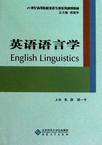英语语言学
出版时间:2010-4 出版社:安徽大学出版社 作者:朱跃,胡一宁 主编 页数:214
Tag标签:无
内容概要
虽然英语语言学对学生学习使用英语有着理论指导意义和实践意义,但是由于种种原因,很多学生认为语言学课程内容抽象、枯燥,对学习英语语言学的兴趣不大,甚至有抵触情绪。要改变这种尴尬的局面,教材的改革十分必要。编者在总结前人英语语言学教材编写经验的基础上,将归纳法引入教材的编写之中,学生通过分析语言事例,去探索、发现、总结语言使用规律,发展理性思维。教材编写强调基础性、实用性、启发性、自足性和时代性;强调理论性与实践性相结合,学术性与趣味性相结合;同时,注重把启发式、讨论式、发现式和研究式的教学理念运用于教材编写之中。
书籍目录
Chapter 1 Introduction 1. What is linguistics? 1.1 Definition of linguistics 1.2 Main branches of linguistics 1.3 Why study language? 2. What is language? 2.1 Definition of language 2.2 Design features of language 3. Important distinctions in linguistics 3.1 Prescriptive vs. descriptive 3.2 Synchronic vs. diachronic 3.3 Speech vs. writing 3.4 Langue vs. parole 3.5 Competence vs. performance Exercises Further ReadingsChapter 2 Phonetics 1. The phonic medium of language 2. Phonetics 2.1 What is phonetics? 2.2 Organs of speech 2.3 Classification of English speech sounds Exerc i ses Further ReadingsChapter 3 Phonology 1. General introduction to phonology 2. Basic concepts of phonology 2.1 Phone, phoneme and allophone 2.2 Phonemic contrast, complementary distribution and minimal pair 2.3 Broad transcription and narrow transcription 3. Some phonological rules 3.1 Sequential rules 3.2 Assimilation rules 4. Suprasegmental features: stress, tone and intonation 4.1 Stress 4.2 Tone 4.3 Intonation Exercises Further ReadingsChapter 4 Morphology 1. Morphology 2. Morphemes 3. Types of morphemes 3.1 Free morphemes 3.2 Bound morphemes 4. Allomorph 5. Word formation rules 5.1 Compounding 5.2 Derivation 5.3 Conversion 5.4 Clipping 5.5 Initialism 5.6 Acronym 5.7 Blending 5.8 Back-formation Exercises Further ReadingsChapter 5 Syntax 1. Syntactic categories 2. Combinational rules 3. Sentence structure 3.1 The structural approach and IC analysis 3.2 Advantages and problems of IC analysis 3.3 Transformational-generative grammar 4. Universal grammar 4.1 The observational basis of UG 4.2 General principles of UG 4.3 General parameters of UG Exercises Further ReadingsChapter 6 Semantics 1. General introduction 2. Approaches to semantics 2.1 The naming theory 2.2 The conceptualist theory 2.3 Contextualism 2.4 Behaviorism 3. Lexical meaning 3.1 Sense and reference 3.2 Major semantic relationships between words 4. Sentence meaning 5. Analysis of meaning 5.1 Componential analysis——a way to analyze lexical meaning 5.2 Predication analysis——a way to analyze sentence meaning Exercises Further ReadingsChapter 7 Pragmatics 1. What is pragmatics? 2. Context 3. Entailment 4. Presupposition 5. Speech acts 6. Conversational implicatures 7. The cooperative principle 8. Deixis 9. Politeness principle Exercises Further Recld ingsChapter 8 Language and Society 1. Speech community 2. Relationships between language and society 3. Language varieties 3.1 Dialects 3.2 Register 3.3 Mixture of varieties Exercises Further ReedingsChapter 9 Language and Culture 1. General introduction 1.1 The relationship between language and culture 1.2 The Sapir-Whorf hypothesis 2. Cross-cultural communication 2.1 Meaning as sign 2.2 Cultural clash 2.3 Stereotype Exercises Further ReadingsChapter 10 Language and Acquisition 1. Behaviorism 2. Innatism:how languages are learned 3. Interactionist theory: how languages are learned 4. Interlanguage: how languages are learned 5. Acquisition vs. learning 6. Competence vs. performance 7. Universal grammar 8. Language transfer 9. Comprehensible input 10. Critical period hypothesis Exercises Further ReadingsChapter 11 Language and Methodology 1. Approaches to language teaching 2. Contribution of linguistics to language teaching 3. Language testing 3.1 Basic considerations of language testing 3.2 Main types of language tests Exercises Further Read ingsReferences
图书封面
图书标签Tags
无
评论、评分、阅读与下载
用户评论 (总计1条)
- 也就那回事,反正语言学看着就是个枯燥,当然除非你喜欢它
